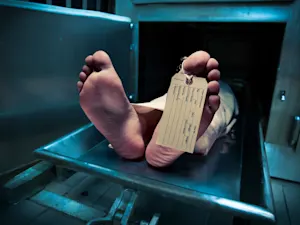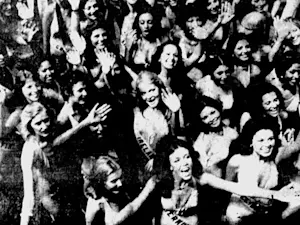
The Killer Clown Unmasked
John Wayne Gacy, one of America's most infamous serial killers, led a double life that shocked the nation. Known publicly as a successful businessman and community volunteer, Gacy was privately responsible for the brutal murders of at least 33 teenage boys and young men in Cook County, Illinois. His heinous crimes, hidden behind a façade of normalcy, earned him the moniker "Killer Clown" due to his habit of performing at children's parties in clown costume. Read on to delve into Gacy's background, his horrific crimes, and his eventual capture and conviction.
Early Life and Career
John Wayne Gacy was born on March 17, 1942, in Chicago, Illinois. He endured a troubled childhood marked by an abusive father who frequently belittled him and physically abused him and his siblings. Gacy's father's harsh treatment left deep psychological scars and contributed to his later struggles with his identity and self-worth. Despite these early challenges, Gacy managed to graduate from Northwestern Business College in Chicago and began his career in sales.
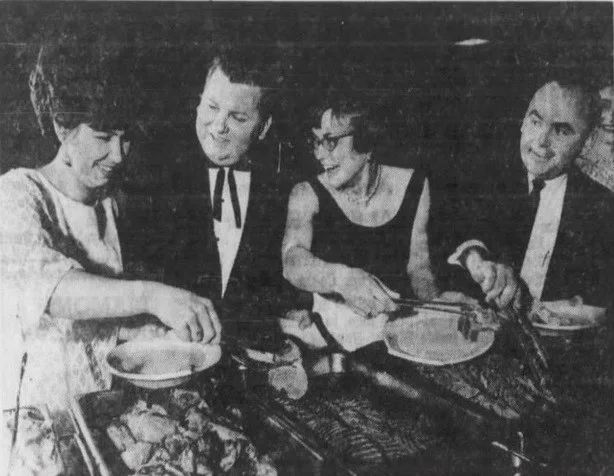 Gacy (second left), pictured with his first wife (left) at the 1967 Waterloo Jaycees Christmas party.
Gacy (second left), pictured with his first wife (left) at the 1967 Waterloo Jaycees Christmas party.
In 1964, Gacy married Marlynn Myers and moved to Waterloo, Iowa, where he managed a series of KFC® restaurants owned by his father-in-law. The couple had two children, and Gacy appeared to be building a stable family life. However, his personal demons continued to haunt him. After a conviction for sexually assaulting a teenage boy in 1968, Gacy served 18 months in prison. Upon his release, his wife divorced him, and he returned to Chicago to start anew.
The Murders
Gacy's killing spree began in earnest in the early 1970s. He would lure young men to his Norwood Park home under the guise of offering them construction work or other opportunities. Once there, he would sexually assault, torture, and eventually kill them, typically by strangulation. Gacy buried most of his victims in the crawl space beneath his house, creating a gruesome graveyard that would eventually lead to his downfall.
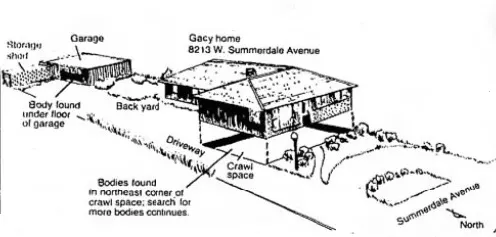 Diagram of Gacy's Norwood Park residence, depicting the dimensions of his crawl space. Gacy employed various methods to deceive and capture his victims.
Diagram of Gacy's Norwood Park residence, depicting the dimensions of his crawl space. Gacy employed various methods to deceive and capture his victims.
He often posed as a law enforcement officer or used his position in the community to gain their trust. Gacy would sometimes perform a "magic trick" that involved handcuffing his victims before overpowering them. His knowledge of counterintelligence, gained from his work as a contractor and political operative, allowed him to evade detection for years despite mounting suspicions.
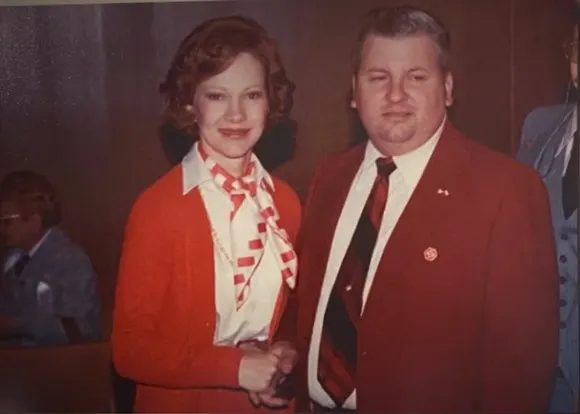 Gacy with First Lady Rosalynn Carter on May 6, 1978, six years after his first murder and seven months before his final arrest.
Gacy with First Lady Rosalynn Carter on May 6, 1978, six years after his first murder and seven months before his final arrest.
Investigation and Arrest
The investigation into Gacy's crimes intensified in December 1978, when 15-year-old Robert Piest went missing after telling his mother he was meeting Gacy about a job. Police obtained a search warrant for Gacy's home, where they discovered several suspicious items linked to missing young men. Continued surveillance and investigation led to the discovery of human remains in the crawl space of Gacy's house. Confronted with the evidence, Gacy eventually confessed to the murders, claiming to have killed around 30 people.
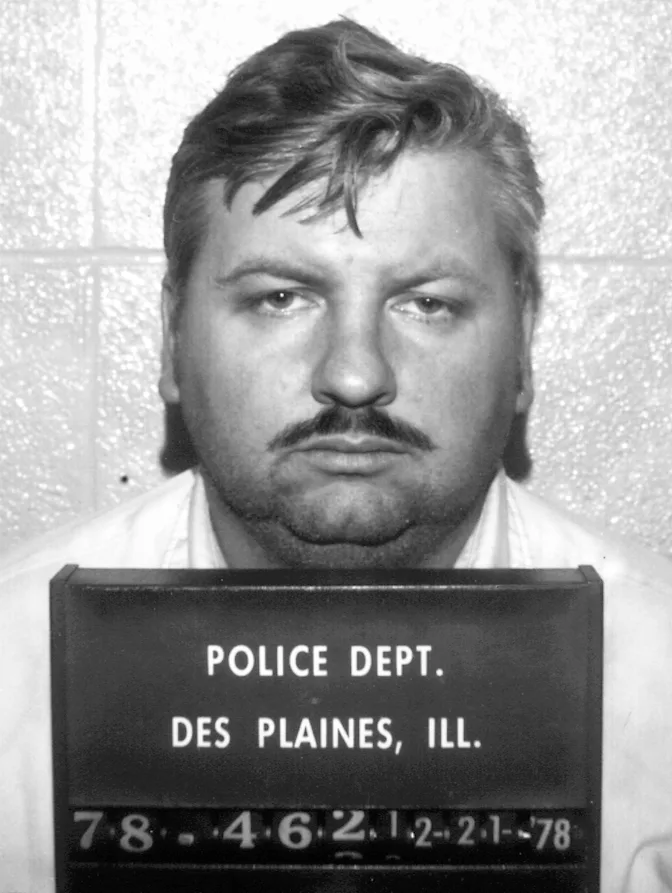 Booking photo of Gacy taken by the Des Plaines Police Department, December 1978.
Booking photo of Gacy taken by the Des Plaines Police Department, December 1978.
His trial began on Feb. 6, 1980, focusing on whether he could be declared insane. Despite his defense's claims of multiple personality disorder, the jury found him guilty of 33 murders after a short deliberation. Gacy was sentenced to death and spent 14 years on death row.
John Wayne Gacy's horrific crimes and double life as a respected community member and serial killer left an indelible mark on American criminal history. His execution in 1994 ended the life of one of the country's most notorious murderers, but the memory of his victims and the gruesome nature of his deeds continue to haunt those who remember the case. Gacy's story serves as a chilling reminder of the potential for evil lurking beneath seemingly ordinary exteriors.
Reference: John Wayne Gacy









